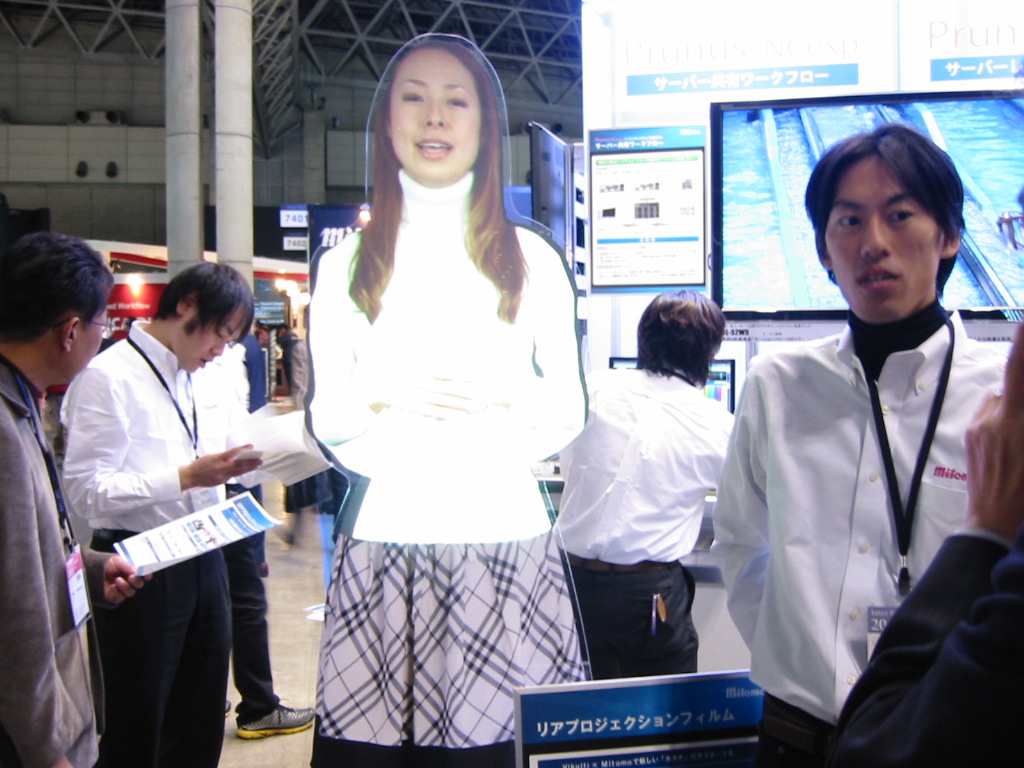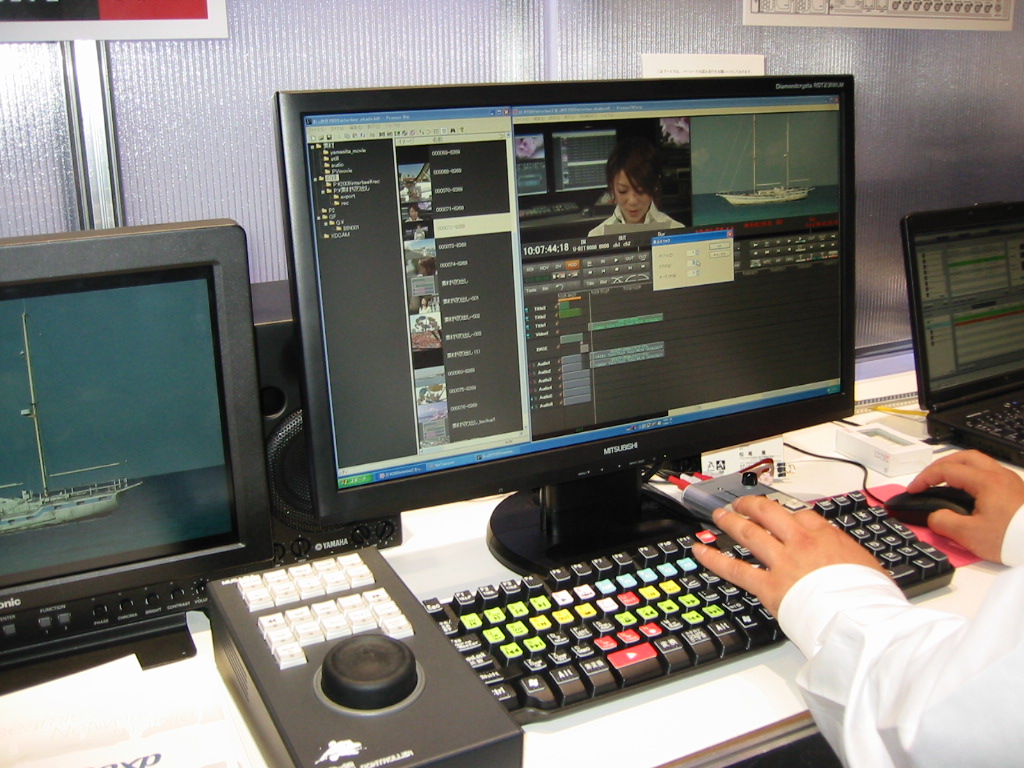[Inter BEE Exhibitor Information] Mitomo exhibit of digital mannequins and server-less non-linear editing systems
2009.11.19 UP

Presenting signage with "presence"
The Mitomo booth features a demonstration exhibit of digital signage that uses rear projection film.
A rear projection film is placed above a clear screen, and images are projected onto this from the rear. Combining screens and films into the shape of a person creates a "digital mannequin" that has a sense of presence rivaling that of a real human being.
The images on display can also represent other items in addition to people. This digital signage can be used in store showcases and for presentations in commercial establishments, and can also use touch sensors to provide a level of interactivity. The rear projection film is a 3M technology.
Major features of this system are the ability to create content with immersive feel or a sense of presence, and the technology and know-how for the optimal cutting of the film to match that content. Mitomo is leveraging its strengths in these points to provide a comprehensive support that ranges from selection of installation location to creation of content and its operation.
"Chasing edits" without using a server
The booth also features a demonstration exhibit of a non-linear editing system that will accelerate the move to tapeless systems. The system has been created by Mitomo, and is based upon Sakura Eiki's Prunus/NCexp non-linear editing equipment. The system is expected to go on sale from the spring of 2010.
The system supports XDCAM, DVCPRO, AVC-Intra, GFPAK, and other media formats. Simply connecting drives, regardless of the media type, enable editing in a mixed-format environment. Content on tape can be recorded in MPEG2 100M or AVC-Intra50/100M through a HD-SDI input, and edited in real time without having to copy it to the HDD, and "chasing edits" in which editing can be carried out on material that is currently being recorded are also supported. Connecting together multiple Prunus/NCexp devices over a LAN enables sharing of material.
The system provides "server-less type" and "server shared type" as file sharing workflows. The server-less type does not connect to a server but connects Prunus/NCexp devices together over the network, making it suitable for performing digest editing of programs such as specials and sports that have high real-time requirements. On the other hand, the server shared type uses a server that acts as an intermediary when editing material with different file systems. This server can be a low-cost Linux-based NAS. Because these can operate either without a server or with low-cost servers, users don't need to prep for high-cost servers and can benefit from cost-efficiency.








